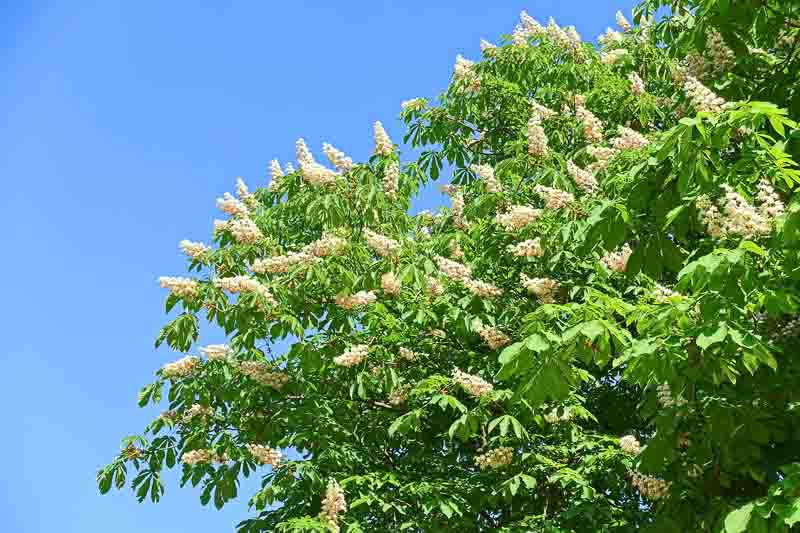Aesculus (Buckeye)
Aesculus, commonly known as buckeye or horse chestnut, is a genus of deciduous trees and shrubs celebrated for their vibrant blooms, distinctive seed pods, and excellent hardiness. These plants, which vary in size from small shrubs to large trees, are native to temperate regions of the Northern Hemisphere.
- Habit: Aesculus is characterized by its palmate leaves, composed of five to seven leaflets radiating from a central point, creating a striking foliage display. The leaves usually turn a delightful yellow or orange in the fall, adding to the plant’s year-round interest.
- Flowers: The most striking feature of Aesculus is its large, erect panicles of flowers, which bloom in spring. These flowers can range in color from white to pink to red, depending on the species, and are often dotted with yellow or red marks. The flowers are followed by interesting seed pods containing one or two large, glossy seeds known as buckeyes or conkers.
- Hardiness: Aesculus species are generally hardy in USDA zones 3-9, and capable of withstanding various environmental conditions. They prefer well-drained soil and a position in full sun or partial shade.
- Uses: The larger species make excellent shade or specimen trees, providing grandeur and architectural interest to any landscape. Some smaller species can be used as shrubs or in a mixed border.
- Benefits: Besides their ornamental benefits, Aesculus species are also known to attract a variety of wildlife, including bees, butterflies, and birds, bringing biodiversity to the garden. However, it’s essential to note that all parts of the plant are toxic if ingested, so care should be taken around pets and children.

